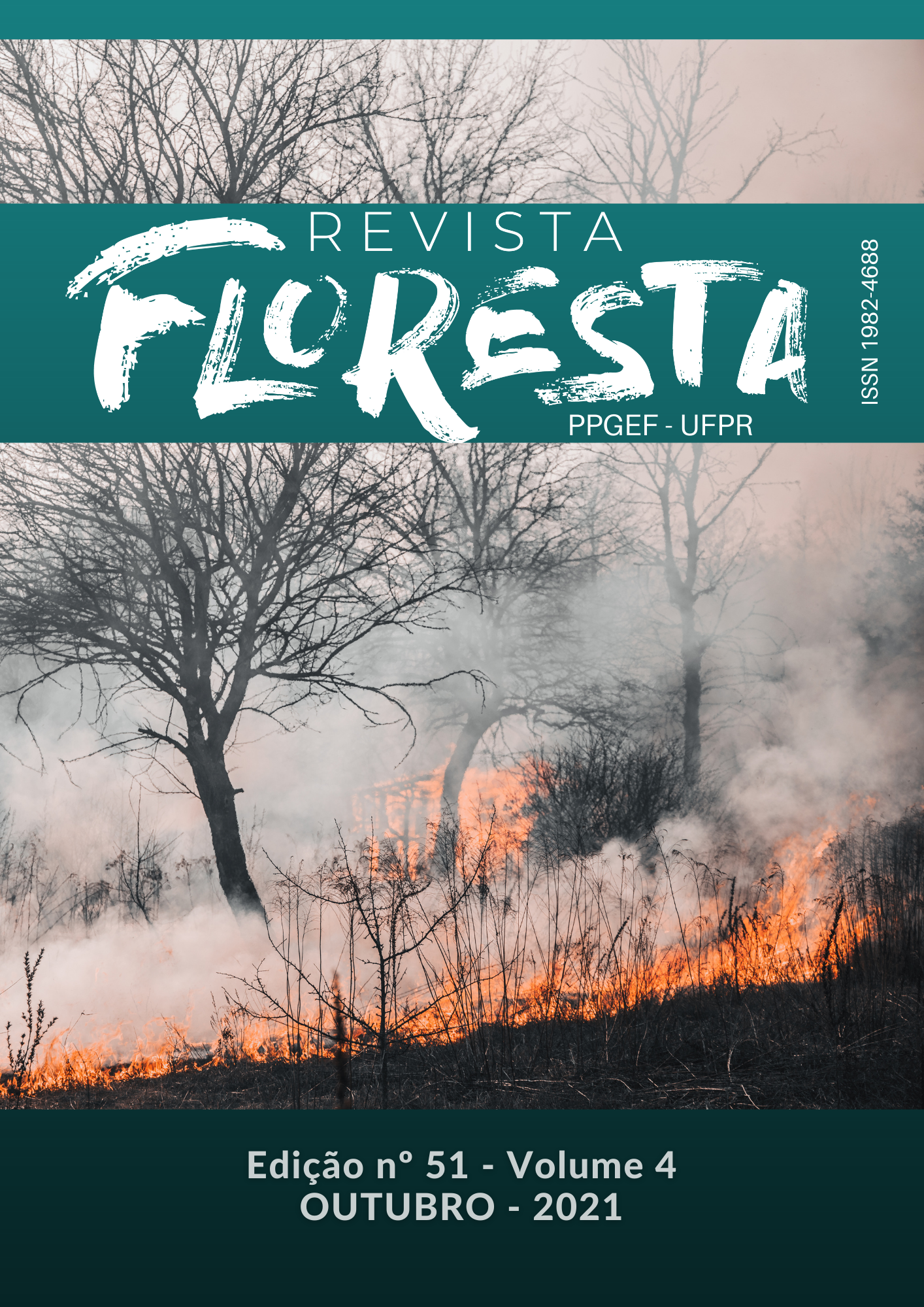ANATOMY AND DRYING OF WOOD OF FOUR SPECIES FROM AN AGROFORESTRY SYSTEM
DOI:
https://doi.org/10.5380/rf.v51i4.74061Palavras-chave:
moisture content, fibers, Pearson correlation.Resumo
Drying is an important process in the generation of wood products, as it increases the quality of the final products; however, it is influenced by various anatomical characteristics. The aim of this study was to evaluate the influence of anatomy on the drying of wood of Parapiptadenia rigida (Benth.) Brenan, Peltophorum dubium (Spreng.) Taub., Eucalyptus grandis W. Hill × Eucalyptus urophylla S.T. Blake (hybrid), and Schizolobium parahyba (Vell.) Blake trees from an agroforestry system. Three trees aged 9 years were sampled for each species. The trees were removed from the study region when their diameter at breast height (DBH) was 1.30 m from the ground. Blocks were made with dimensions of 5.0 × 5.0 × 15.0 cm for the evaluation of oven drying and 1.5 × 1.5 × 2.0 cm for anatomical features. S. parahyba has the highest value of fiber diameter (35.1 µm) and lumen diameter (27.6 µm), whereas P. dubium had the highest value of cell wall thickness (6.8 µm). The average equilibrium moisture content was 10.98% after 40 days of drying. The anatomy of the wood influenced the drying of the four species intensity, which was related to humidity during all periods. The anatomical parameters that most influenced drying were fiber diameter (Pearson correlation coefficient: 0.77), lumen diameter (0.76), and fiber cell wall thickness (0.73); the higher the values, the greater was the drying intensity.
Downloads
Publicado
Como Citar
Edição
Seção
Licença
Direitos Autorais para artigos publicados nesta revista são do autor, com direitos de primeira publicação para a revista. Em virtude da aparecerem nesta revista de acesso público, os artigos são de uso gratuito, com atribuições próprias, em aplicações educacionais e não-comerciais.A revista, seguindo a recomendações do movimento Acesso Aberto, proporciona acesso publico a todo o seu conteudo, seguindo o principio de que tornar gratuito o acesso a pesquisas gera um maior intrcambio global de conhecimento.
Conteúdos do periódico licenciados sob uma CC BY-NC-SA 4.0



